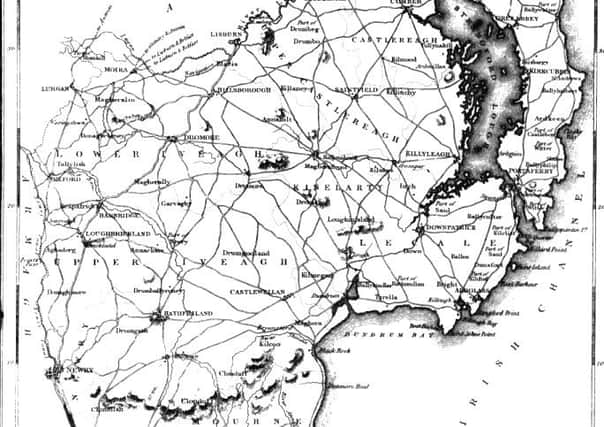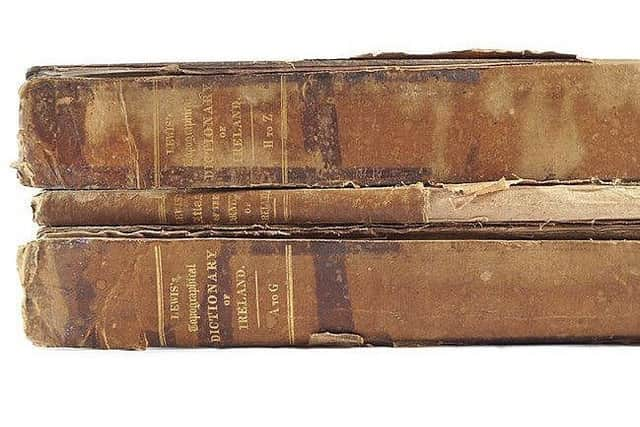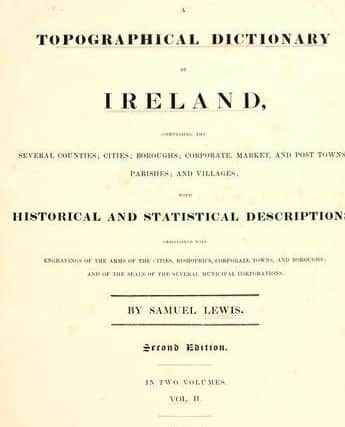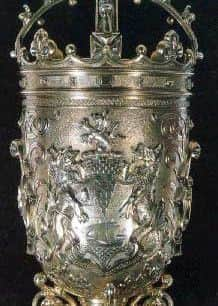Writing about Britain is easy but writing about Ireland is difficult and costs more


The story of the town is by Samuel Lewis from his two-part series of books called ‘A Topographical Dictionary of Ireland’, published in 1837.
Lewis was a writer, editor and publisher (Samuel Lewis and Co based in London) of topographical dictionaries and maps of the UK and Ireland, which aimed to give in ‘a condensed form’ a faithful and impartial description of each place.
He died in 1865.
Advertisement
Hide AdAdvertisement
Hide Ad

Lewis’s books, with accompanying maps, were collectively the first detailed study of its kind for Ireland, covering every parish, town and village on the island.
He relied greatly on information provided by local contributors, who were generally given the proof sheets for final comment and revision.
Apparently Ireland was something of a headache for him!
In his preface he wrote: “The numerous county histories, and local descriptions of cities, towns, and districts of England and Wales, rendered the publication of their former works, in comparison with the present, an easy task. The extreme paucity of such works, in relation to Ireland, imposed the necessity of greater assiduity in the personal survey, and proportionately increased the expense.”


Samuel also collected the numbers of local inhabitants and wrote about the economy, history, topography, religion and parish structures, administration, courts and schools.
Advertisement
Hide AdAdvertisement
Hide AdHe highlighted Ireland’s principal inhabitants and important people, such as landlords, merchants and professionals.
More about his Dromore writings in a moment, but first to the wealthy goldsmith and silversmith who came from the town.
Willam Gibson was born in 1840, too early to be included in Samuel’s inhabitants-list. He was the son of a small farmer in Drumbroneth, Dromore.


As a small boy he was apprenticed to his uncle, a watch maker in Belfast.
Advertisement
Hide AdAdvertisement
Hide AdDiligent and hardworking, at the age of 27 he set up his own business and bought out several successful jewellers, first in North Street and then in Castle Junction, which became known locally as ‘Gibsons Corner’.
His range included top of the range silver and gold objects, occasionally exhibited in the USA and Paris where he won some important trade prizes.
Gibson’s business expanded rapidly and, in 1884 he acquired prime premises in London’s Regent Street, and several more thereafter.
He purchased the farm in Drumbroneth, Dromore where he had been born, and built a large house, Drumbroneth House, where he stayed on business trips to Ireland.
Advertisement
Hide AdAdvertisement
Hide AdHe had his own registered assay mark (hallmark) and presented very some very elaborate silver cups to the Royal Ulster Agricultural Society.
He also made a magnificent gold Mace for Queen’s University and another for the Belfast Corporation which was first used in 1913.
When William Gibson died in Sussex in 1913, he was so well known and respected that a special train was run from London to bring the Lord Mayor, Aldermen and leading businessmen to his funeral.
The rest of today’s page contains extracts from the writings of Samuel Lewis about Gibson’s beloved birthplace – Dromore – taken from Samuel’s ‘Topographical Dictionary of Ireland’ published in 1837.
Advertisement
Hide AdAdvertisement
Hide AdDromore’s name, anciently written Druim-mor, signifies ‘the Great Ridge’, Druim being the term applied to a long ridge-shaped hill, such as that above Dromore.
Its origin may be traced from St Colman, who founded here an abbey for Canons Regular, which afterwards became the head of a See, of which he was made the first bishop.
This abbey had acquired extensive possessions early in the 10th century and was frequently plundered by the Danes.
The abbey also suffered materially from the continued feuds of the powerful O’Nials, Magennises, and Macartans.
Advertisement
Hide AdAdvertisement
Hide AdIn the 14th century, Sir J Holt and Sir R Belknap, being convicted of treason against Richard II, were condemned to death, but on the intercession of the clergy, were banished for life to the village of Dromore, in Ireland.
At the Reformation the cathedral was in ruins, and the town had greatly participated in the devastations of the preceding periods; in this situation it remained till 1610, when James I re-founded the See by letters patent, rebuilt the cathedral, and gave to the bishop extensive landed possessions in this and several adjoining parishes, which he erected into a manor called ‘Bailonagalga’, corrupted into Ballymaganles, a denomination or townland on which the town stands, with a court leet (a manorial court) twice in the year, a court baron every three weeks for pleas under £5, a free market every Saturday, and two fairs.
An episcopal palace was commenced by Bishop Buckworth, but previous to its completion, the war of 1641 broke out, and the cathedral, the unfinished palace, and the town were entirely destroyed by the parliamentarian forces.
In 1688, a skirmish took place near the town between a party of Protestants and some of the Irish adherents of James II.
Advertisement
Hide AdAdvertisement
Hide AdThe town consists of a square and five principal streets, and contained, in 1831, 396 houses.
Several bleach-greens were formerly in full work in the vicinity, and among others, that occupied by the late Mr Stott, whose poetical effusions under the signature of Hafiz, in the provincial newspapers, attracted much attention; but all are now unemployed except one.
The market is on Saturday, and is well supplied with all sorts of provisions, farming stock and linen.